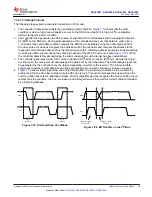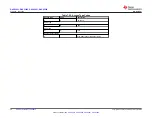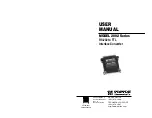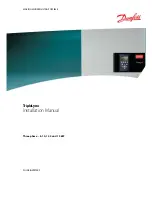
7.4.6.4 NVM Cyclic Redundancy Check (CRC)
The DACx300x implement a cyclic redundancy check (CRC) feature for the NVM to make sure that the data
stored in the NVM is uncorrupted. There are two types of CRC alarm bits implemented in DACx300x:
• NVM-CRC-FAIL-USER
• NVM-CRC-FAIL-INT
The NVM-CRC-FAIL-USER bit indicates the status of user-programmable NVM bits, and the NVM-CRC-FAIL-
INT bit indicates the status of internal NVM bits The CRC feature is implemented by storing a 16-bit CRC
(CRC-16-CCITT) along with the NVM data each time NVM program operation (write or reload) is performed and
during the device start-up. The device reads the NVM data and validates the data with the stored CRC. The
CRC alarm bits (NVM-CRC-FAIL-USER and NVM-CRC-FAIL-INT in the GENERAL-STATUS register) report any
errors after the data are read from the device NVM. The alarm bits are set only at boot up.
7.4.6.4.1 NVM-CRC-FAIL-USER Bit
A logic 1 on NVM-CRC-FAIL-USER bit indicates that the user-programmable NVM data are corrupt. During this
condition, all registers in the DAC are initialized with factory reset values, and any DAC registers can be written
to or read from. To reset the alarm bits to 0, issue a software reset command (see also
), or cycle
power to the DAC. A software reset or power-cycle also reloads the user-programmable NVM bits. In case the
failure persists, reprogram the NVM.
7.4.6.4.2 NVM-CRC-FAIL-INT Bit
A logic 1 on NVM-CRC-FAIL-INT bit indicates that the internal NVM data are corrupt. During this condition, all
registers in the DAC are initialized with factory reset values, and any DAC registers can be written to or read
from. In case of a temporary failure, to reset the alarm bits to 0, issue a software reset command (see also
) or cycle power to the DAC. A permanent failure in the NVM makes the device unusable.
DAC53001, DAC53002, DAC63001, DAC63002
SLASF48 – MAY 2022
44
Copyright © 2022 Texas Instruments Incorporated
Product Folder Links:
















































